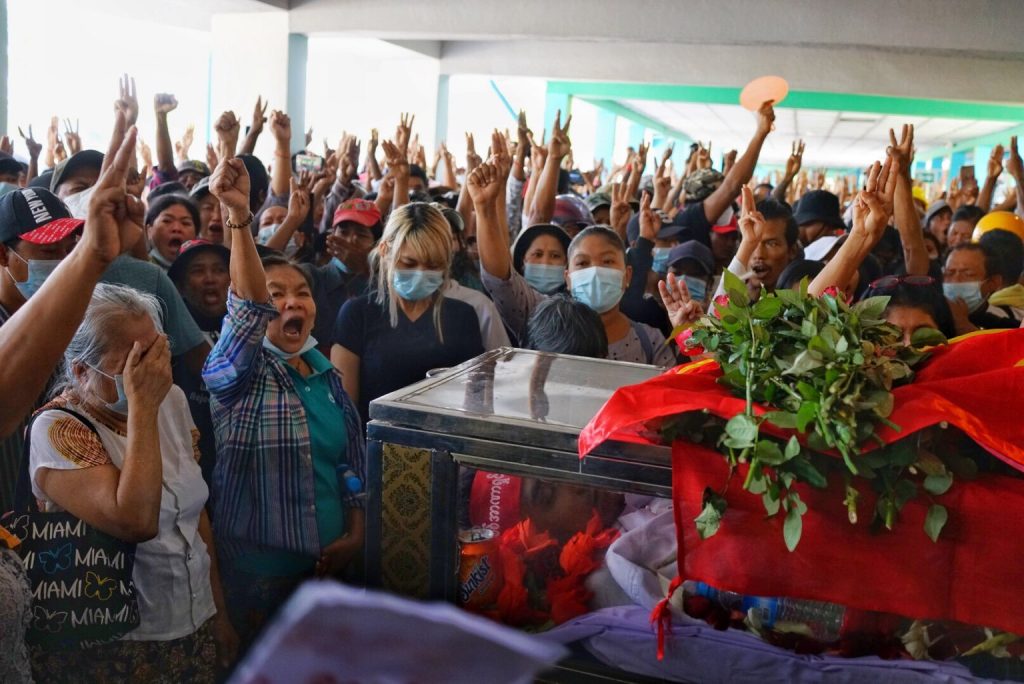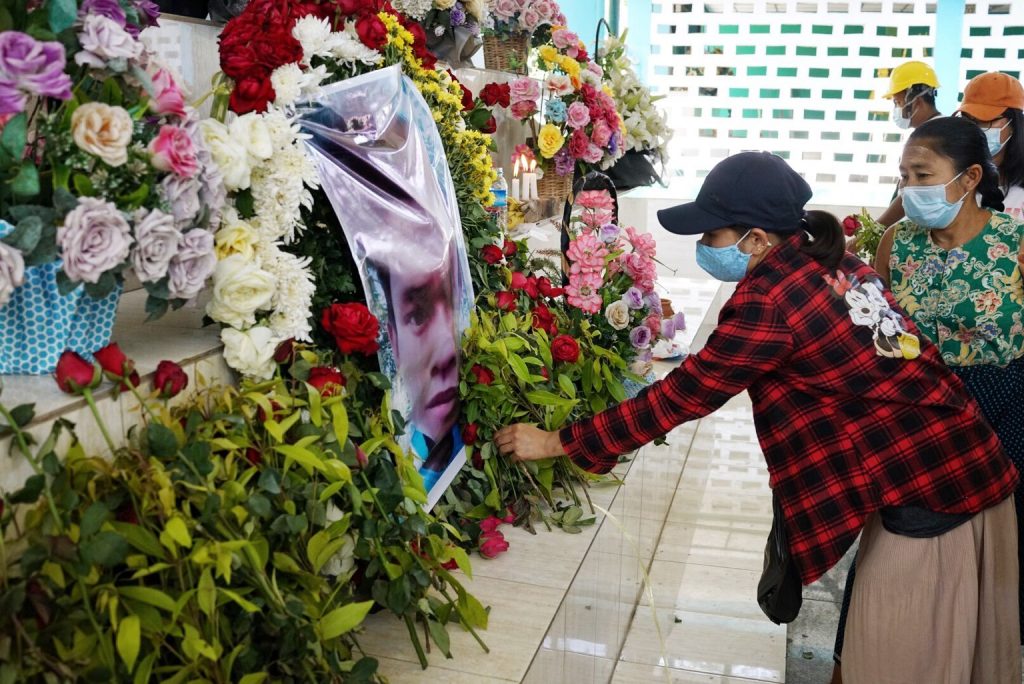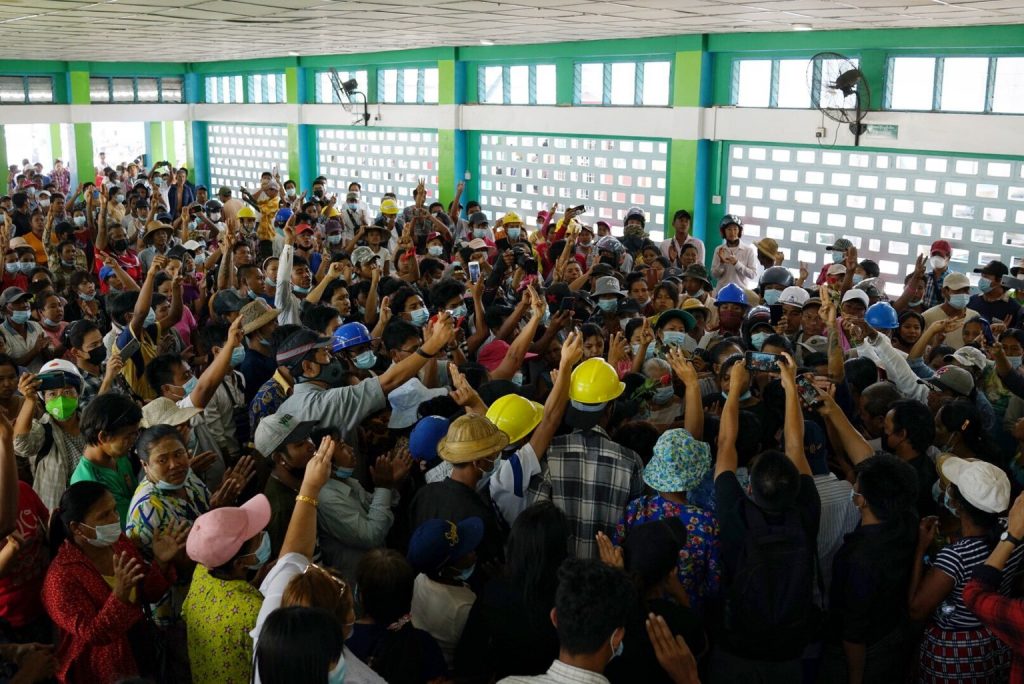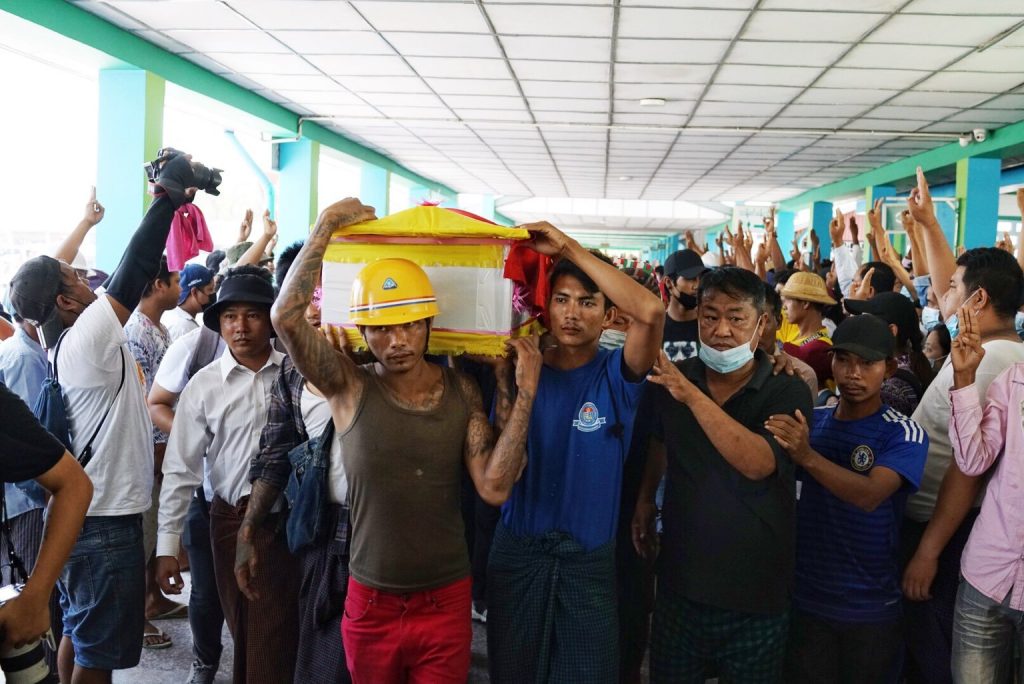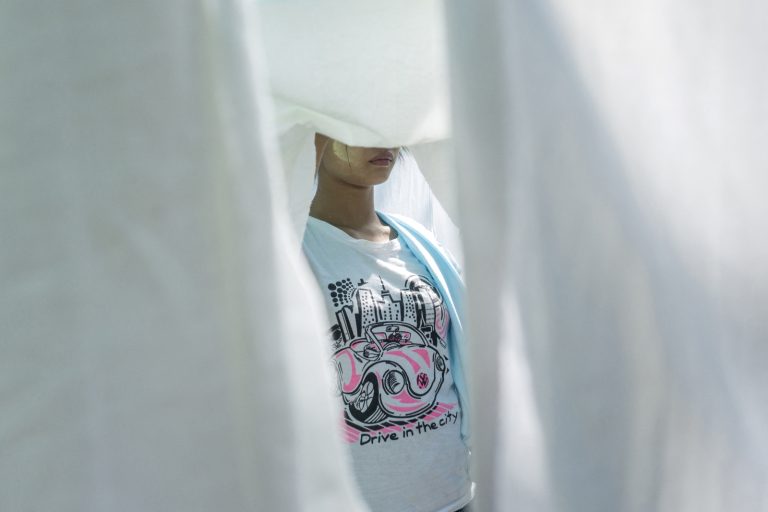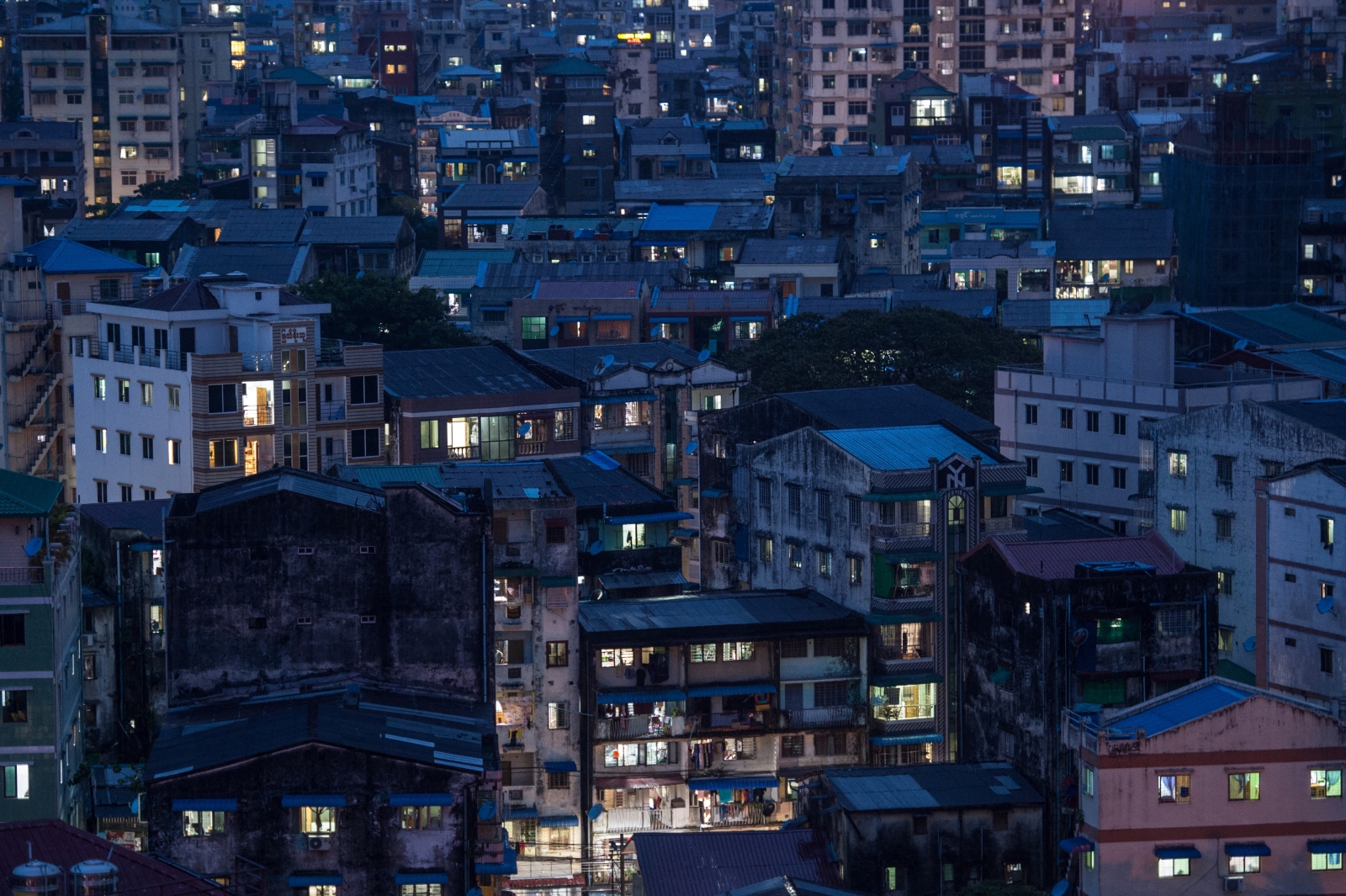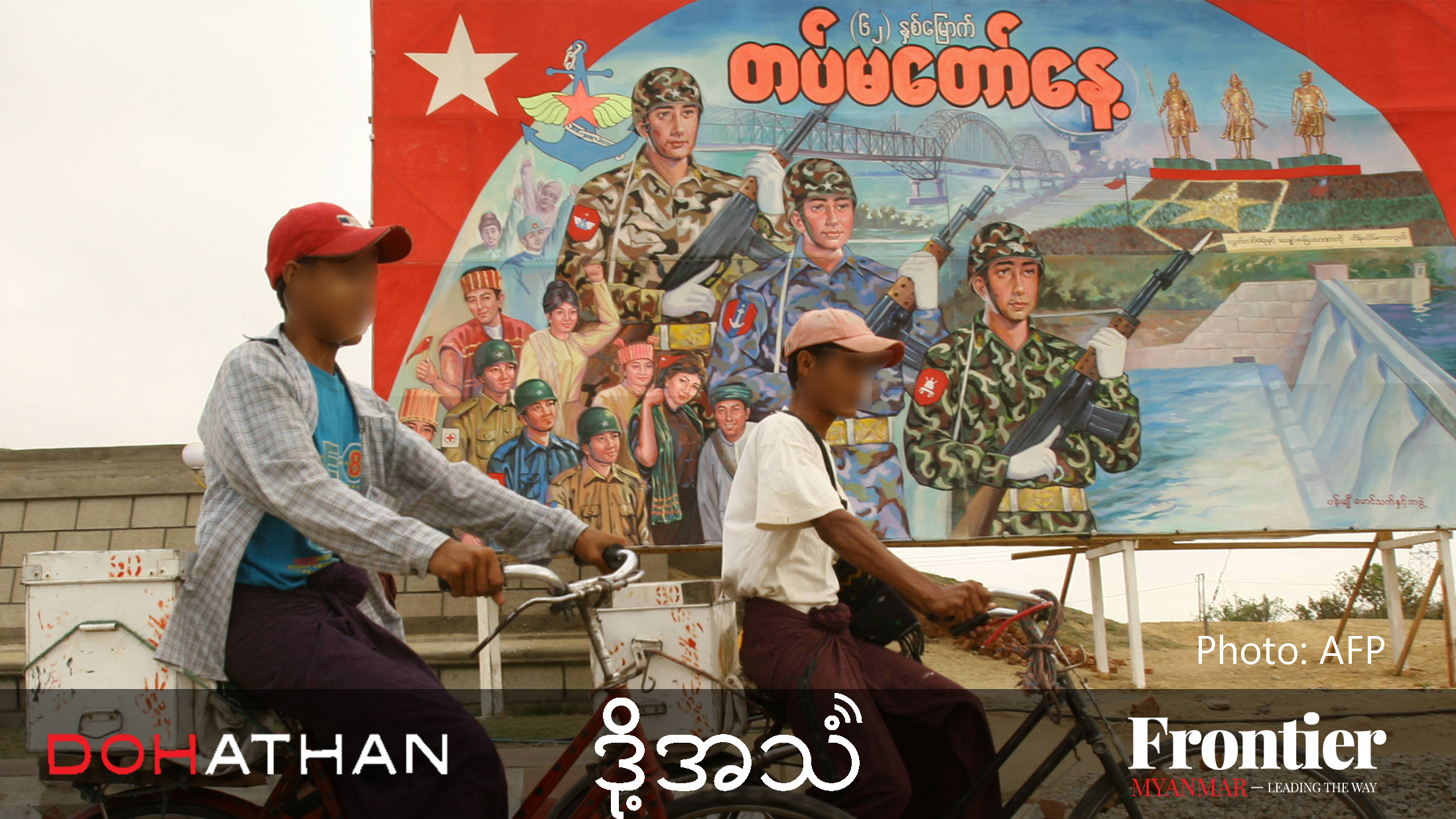Three protesters killed in North Okkalapa on March 3 received an emotional farewell at Yangon’s Yayway Cemetery, with more than 500 mourners chanting slogans and giving the three-finger salute.
By FRONTIER
On the afternoon of March 5, a chorus of applause rang out at the Yayway Cemetery, in Yangon’s North Okkalapa Township. Yet the tears in the eyes of the hundreds who had gathered demonstrated that the clapping and cheering was not out of joy and happiness, but grief and determination.
Frontier confirmed at least 17 people were killed by security forces nationwide on March 3, although some sources put the toll as high as 38. Since the February 1 coup, about 50 protesters are thought to have died at the hands of security forces.
Of all the crackdowns on protesters, few have been as vicious or deadly as the one in North Okkalapa, a sprawling suburb on Yangon’s northern outskirts, on March 3, when at least eight young men were killed.

The funerals of three of the deceased – Ko Pho Chit, 22, Ko Zwe Htet Soe, 26, and Ko Arkar Moe, 25 – took place at Yayway Cemetery on March 5, while three others were cremated at the cemetery on March 7. The remains of the seventh victim were sent back to their hometown in Ayeyarwady Region, and the funeral for the eighth man was held on March 8 at Yayway.
The scene on March 5 was a highly emotional one. Red fighting peacock flags associated with the student movement were placed outside homes along the street leading up to the cemetery, while those in attendance defiantly gave the three-finger salute, which has been borrowed from the pro-democracy movement in neighbouring Thailand and become the symbol of Myanmar’s resistance to military rule. Many of the attendees were in tears – even those who had never met any of the three young men.
In his 11 years working at Yayway, mortician Ko Maung Oo said he had never witnessed such emotion among a crowd of mourners. “I didn’t know these children. They are not my relatives, and I only saw them today, but they are our citizens. They are only children. How brutal they [authorities] are to shoot children,” Maung Oo said, wiping tears from his face.

Deadly force
The demonstration at North Okkalapa on March 3 was not the first the township had seen. But unlike in other parts of Yangon, the security forces had until then made no move to disperse them. The 700 people who gathered on Thudhamma Road were utterly unprepared when security forces made their move, violently breaking up the demonstration. Unlike the crowded neighbourhoods of Myaynigone and Hledan, there were few places to hide, and the security forces quickly arrested about 60 young people, according to a Frontier reporter who was on the scene.
The protesters soon gathered again, demanding the detainees be released. Even when the soldiers levelled their weapons at the crowd, few of the demonstrators backed away; they continued shouting, without even wearing so much as a face mask to protect themselves. When soldiers from Light Infantry Division 77 opened fire, a few young men at the front fell to the ground. Even then the crowd didn’t immediately flee; a few of the protesters bravely moved forward to fetch the wounded.
Two people were killed in the morning crackdown, while another – whom Frontier saw being kicked and dragged by security forces while unconscious – died later of his injuries.
But the protesters gathered again on Thudhamma Road in the evening, and once again, security forces opened fired; videos of the crackdown show them using automatic weapons against protesters. Four more people were killed that night and 18 were seriously injured, one of whom later died of his injuries.
“I think the soldiers were afraid of us when we approached them,” said a protester who was hit in the leg by a bullet on March 3. “They got into a truck and drove away. When they were far enough away, they got out of the truck and started shooting at us.”
So many were wounded that at 5pm striking medical workers agreed to reopen North Okkalapa Township Hospital temporarily in order to treat their injuries.
Final journey
At Yayway Cemetery on March 5, the three victims had been adorned with red bandanas bearing the words “We don’t want dictatorship” and their coffins draped in the red fighting peacock flag.
During the funeral procession, the crowd shouted revolutionary slogans:
“To establish democracy, our cause.”
“Down with the dictatorship, our cause.”
“Don’t shoot us with bullets bought with the taxpayers’ money.”
The mourners clapped vigorously while singing the song Thway Thitsar, or “Blood Oath”, a popular revolutionary anthem by vocalist Htoo Eain Thin.
For family members, the fact that these young men had died for such an important cause seemed to offer some consolation.
Ma Thae Su, the wife of one of the slain, Pho Chit, was so overcome with grief that two people had to support her. But as the crowd shouted the revolutionary slogans, she implored her husband to join them one last time. “Get up and shout,” she said, as tears streamed down her face. “Get up and keep shouting, Ko Pho Chit.”


